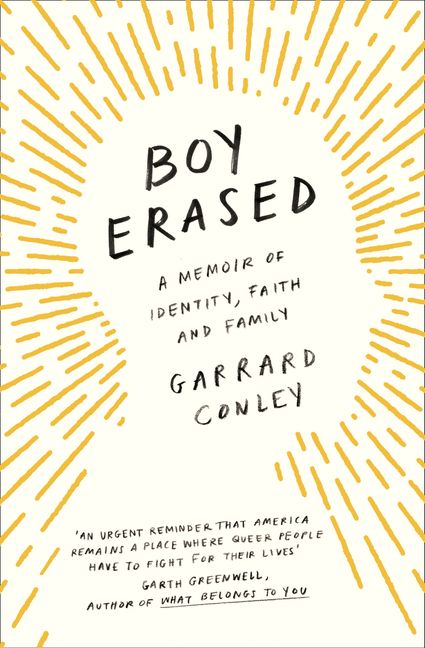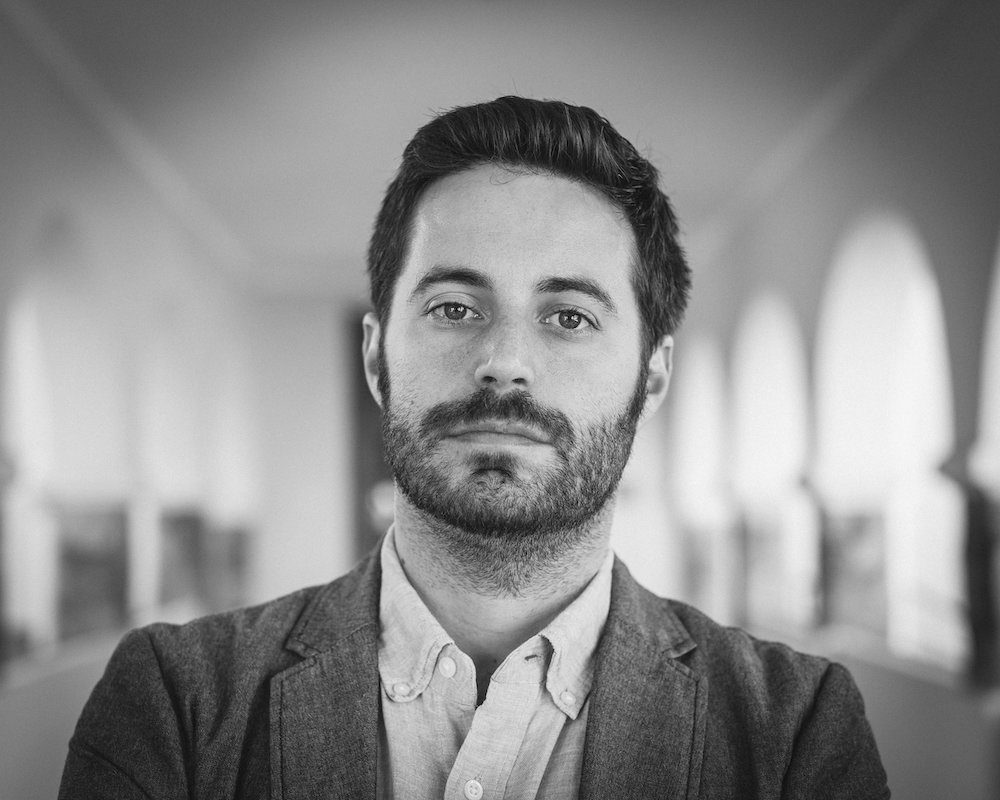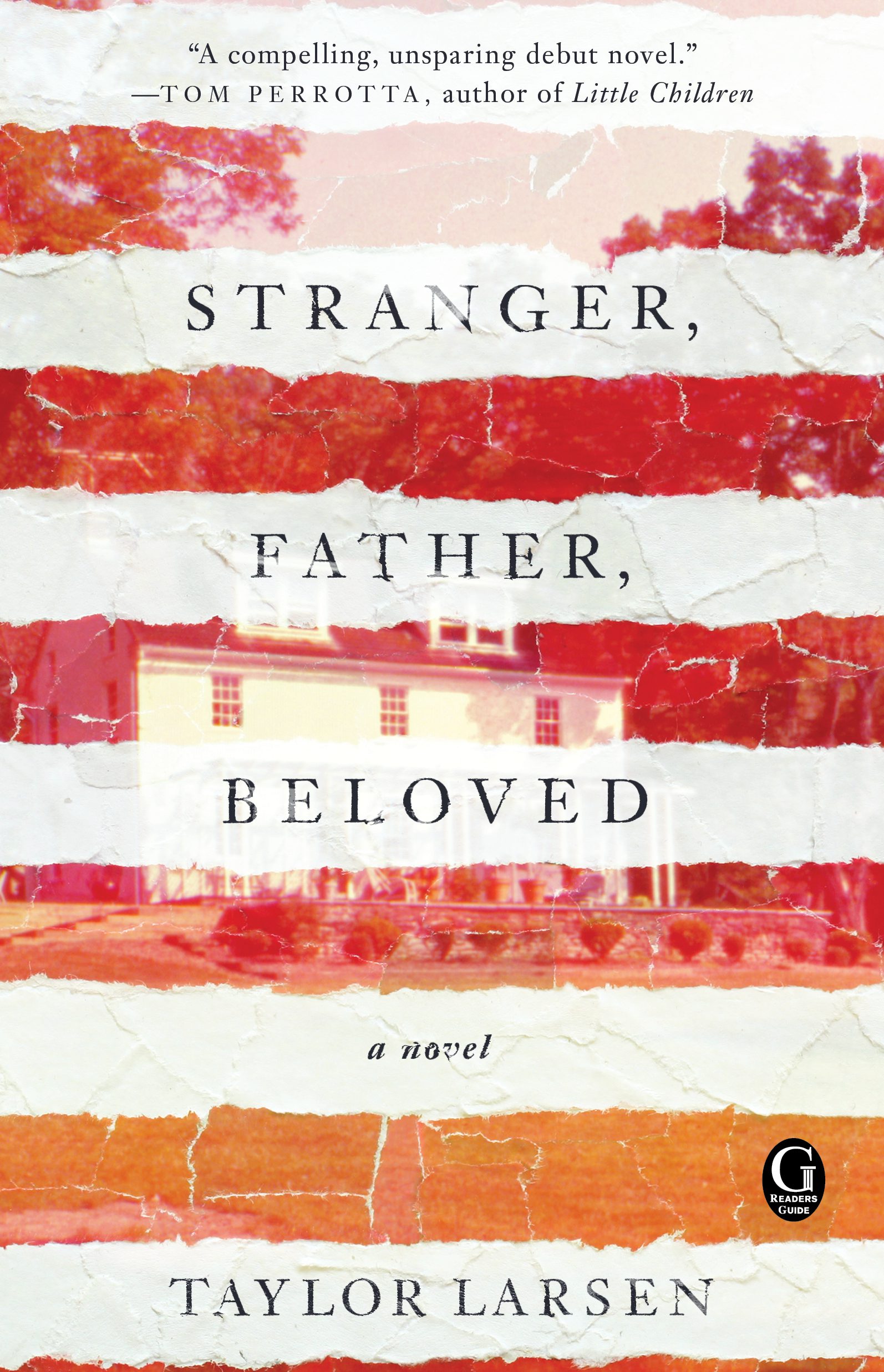
On first reading Garrard Conley’s memoir Boy Erased, recounting his experience of shifting familial alliances while he underwent highly traumatic gay conversion therapy, a story now receiving attention as a film starring Nicole Kidman and Lucas Hedges, I felt an unsettling déjà vu. This had less to do with specific coming-of-age memories than with Conley’s deep sense of literary heritage, evoking writers like Hawthorne and Emerson, whom I hadn’t read since high school—indirectly bringing back that period of near-universal angst.
But Conley’s symbolic use of landscape, along with profound interiority, also finds parallel in such recent novels as Taylor Larsen’s Stranger, Father, Beloved, in which a father of two catches his wife in an unguarded moment, and his divided inner life begins to unravel the family unit. Knowing these two writers were acquainted, I was curious to hear them comment on one another’s work, their shared influences, and interrogations of nuclear family and gender performance.
***
The Rumpus: You both engage the notion of precarious family allegiances, and movement within gender archetypes—really, how gender is almost a kind of camp performance. Given the works’ intense lens on family roles, particularly the role of the father, we might start by discussing literary parentage.
Garrard, you’ve identified The Scarlet Letter as a formative text for you, due to its permissive interiority, its focus on a tempestuous inner life. I start to see The Scarlet Letter as a thematic antecedent to Boy Erased. Not only its interiority, but it’s grappling with doubt and faith, personal secrets, the burden of communal accountability—I felt those deacons and attendants at the car dealership where your father worked, in their dark suits, were brethren of those Puritans Hawthorne describes. And not just in their collective judgment, but their collective support. Was that text a touchstone, either thematically or in terms of technique, for Boy Erased?
Garrard Conley: The Scarlet Letter is a book I return to again and again for inspiration. There’s some gnostic alchemy in that text, the way Hawthorne evokes dread and terror while also transforming those black-browed Puritan tortures into something metaphysical, wonder-filled. It’s hard to describe how he makes me as a reader and writer feel, though in twenty-first century terms, I’d say he queered history in the way many outcasts have had to queer their personal and cultural histories.
Hawthorne felt implicated by his past (he added the “w” to his last name to distance himself from the Hathorne witch hunters of Salem), and instead of simply ignoring the violence his family had done to women’s bodies, he redirected his sense of guilt into a feminist novel that took on all of the cultural forces that had prevailed in the Puritan imagination and brought about such horrors. Obviously, after reading The Scarlet Letter so many times in my formative years, Hawthorne’s project began to resonate with my own. I began to see how I could address my past in a way that clearly showed the horrors of conversion therapy and bigotry while it also allowed for some of the wonder of religious experience to exist. I entered my past more directly than Hawthorne entered his, but I was not without some of the metaphysical wonder that his best passages reveal.
Rumpus: Taylor, we find a similar resonance with Hawthorne in your novel—the New England setting, the self-flagellation and Dimmesdale-like somnambulism of the protagonist Michael, the sense of shifting alliances, and ultimately, a public crisis. Is Hawthorne hovering, or are there other shadowy influences at work?
Taylor Larsen: While I admire Hawthorne very much, a more direct influence on my work is The Professor’s House by Willa Cather, that devastating yet subtle novel that deals with the materialistic decay inherent in social climbing and the class system. Cather had a moment in that book that left an impression on me, changing my views of human relationships forever. Godfrey realizes that his entire life has been sculpted by his choice of a lover (to paraphrase his insight) and also: “In great misfortunes, people want to be alone. They have a right to be. And the misfortunes that occur within one are the greatest.” This book hit me hard.
I love books that are deeply plugged into the landscape and the ever-shifting weather that surrounds the characters. My book takes place in New England and uses the tempestuous weather often to mirror the themes and moods in the book—interestingly enough, Garrard and I went up to Cape Cod on January 1 this year and wrote together for a week amidst a giant snowstorm and views of the roaring ocean. We read our work aloud by the fire at night, and I had the distinct pleasure of reading the opening of the first draft of his first novel, which takes place in the eighteenth century and immediately reminded me of Hawthorne’s work. So it all comes together! It is rare that a contemporary novelist can evoke the mood and style of a classical writer and yet retain his own unique voice—and Garrard does this.
Rumpus: I love this image of you two before a fire at night, surrounded by menacing elements. As Hawthorne described it in “The Custom-House”:
The somewhat dim coal fire has an essential Influence in producing the effect which I would describe… This warmer light mingles itself with the cold spirituality of the moon-beams, and communicates, as it were, […] a repetition of all the gleam and shadow of the picture, with one remove further from the actual, and nearer to the imaginative. Then, at such an hour, and with this scene before him, if a man, sitting all alone, cannot dream strange things, and make them look like truth, he need never try to write romances.
Landscape, the ungovernability of nature, plays a key role in both your works. It’s intriguing the way setting serves as a catalyst for interiority. Is this to do with the chaotic and unpredictable nature of the subconscious? Nature corresponding with the id, as opposed to the super-ego how deliberate are such effects in your work? Or is this a more instinctive thing, this intrusion by, and personification of, trees and natural elements, terrain and fog?
Larsen: I am a weather junkie in fiction, in films. I could watch a movie about tornados chasing people all around or vice versa until the cows come home. On a more subtle level, I am constantly impressed by the sheer power of the five elements and nature/landscapes, and I think their majesty should be surrounding all tales of human dilemma.
That Hawthorne passage shows how pregnant nature is with seemingly human qualities. In terms of my book, I did have a keen sense of the landscape and was grateful to be able to use it to showcase Michael’s issues. He is drawn to the wildness of nature because he wants to know his own deepest wilderness but it terrifies him, just as the ocean terrifies me when I stare at it, so much depth and violence and beauty all at once—it is beyond me, literally and figuratively.
That’s one of the things I loved about Garrard’s memoir—not only does he nail a sense of place, but he uses the heat to illustrate the suffocating environment of his home and the narrative never strays into a world devoid of weather and landscape. I cherish that in a book.
Rumpus: There’s that anecdote about Nabokov pointing out the window, and asking a student to identify a particular tree, when the student can’t name it, Nabokov says, “you’ll never be a writer.” But in poetry, it’s a little different, you know. Poems like Plath’s “Elm” or Frost’s “The Sound of Trees” announce themselves up front as psychological studies, and it’s clear the arboreal description is a means to an end. A friend bought me a guidebook to New York trees, knowing how I envy that specificity. That’s what really makes that moment in Garrard’s book with the alders and catkins work, its specificity.
Conley: That Hawthorne quote reminds me a lot of Coleridge’s “Frost at Midnight.” The “secret ministry” performing duties while people sleep. I’m attracted to the idea of a natural world that goes about its business when we aren’t paying attention. There’s something comforting in that. I think both Taylor’s and my writing explores the idea of a deeper nature, one that goes beyond what most people think of as “nature.” Queer individuals have had the word used against them, often when they’re told they’re going “against nature,” but there is a deeper nature, one linked I think to the forests Hawthorne describes in The Scarlet Letter, that is beyond human thought, beyond human laws.
You already know, because I’ve mentioned Coleridge so readily, that I tend to write with one eye to the Romantics (and yes, the Transcendentalists), so I always find myself writing around nature’s mysteries. Another contemporary writer who does this very well is Rebecca Lee, specifically in her short story collection Bobcat. Reading her stories, you always have a sense that an object in a room or a bit of nature is never only what it signifies. I read those stories again and again while I was drafting Boy Erased, trying to understand how she made that possible. I’m still not sure how she did it, or if I emulated her very well, but I do believe my use of natural elements was a very conscious decision.
Rumpus: This intuitive use of elements is very resonant with Emerson’s idea of transcendentalism, the “transparent eyeball” that has a Whitmanesque unity with the peculiar specifics of the natural world. Emerson writes—”The eye reads omens where it goes, / And speaks all languages the rose.” I’m reminded of that early moment in Stranger, Father, Beloved where Michael is transfixed by the nature painting, until he communes with the environment in more tactile ways.
Following Emerson, consider visibility versus invisibility: “I become a transparent eyeball; I am nothing; I see all; the currents of the Universal Being circulate through me; I am part or parcel of God” (from Emerson’s “Nature”). It seemed really important in Boy Erased—even in its title—to portray erasure, blankness, as a screen on which others can project notions of God. Whoever runs the projector runs the whole show. It seemed careful attention was paid to such details as “the blindingly white waiting room” as the narrator enters Love in Action’s facility, where he has to give up his Moleskine notebook. Erasure and blankness equals narrative potential. Is it fair to say that God is really about power over worldly narratives?
Conley: I’m glad you mentioned projectors. I consciously placed a projector midway through the book, the one the church uses to project our family’s pictures for my father’s ordination ceremony. There was a subtle irony present to me in the scene as I was writing it: that I had used this projector to project the Word of God to the church’s congregation year after year in my youth, and I had changed the typeface, cleared up the graphics, etc. in a way that gave me pleasure. Though I didn’t have control over the material or how it was received, I had the ability to make it mine in some small way, i.e. to queer it ever so slightly. In other words, as long as they don’t take all of your humanity away from you, you still have a chance.
Rumpus: Taylor, I wondered, too, in Stranger, Father, Beloved, whether John, the interloper that Michael introduces into his family dynamic, was kept deliberately somewhat nondescript. Michael is playing God, and he needs John to be somewhat hazy so he can mold this story as needed. Was John’s lack of physical specificity a deliberate effect for the reader, early on? He seems to come more into focus later, as things get out of control.
Larsen: For me, keeping John ambiguous physically was a conscious choice. Michael sees him as Christ-like in a sense, there to resurrect the family, which was done not as a way to promote this deeply ingrained notion of the need for and naturalness of heterosexuality but rather to show the tragedy of Michael’s perception. Michael has been so indoctrinated with Christian ideologies that he is unable to view life beyond these notions. He is able to resurrect his love for Alex and his desire to be with men, but he does so after a nervous breakdown, which symbolically is the breakdown of society’s rigid notions of right and wrong concerning sexuality and family structure. So, symbolically, John represents what Michael thinks a man should be like, and that is vague for him and also idealized, until, by the end, he is able to see that John is a real man and not a God-like incarnation sent to free them.
Rumpus: It’s as though, in both stories, in terms of gay identity, being is in conflict with seeming. These stories both appear to trace an arc toward being. There’s this memory, Garrard, of a hunting trip with your father, and this very poignant realization: “The doe appeared to me as an image of the forest itself, its wild grace effortless and unstudied, part of a natural world that didn’t feel the need to question itself… it simply was.” Later, Danny Cosby, one of the Love in Action counselors, is seen as embodying an unselfconscious masculinity—”He just was… He was like an exotic animal in the midst of us, an instinctual being.” (As an aside: it’s funny to realize that the acronym for Boy Erased is BE. Subliminal resonance for the reader?)
In the context of the family, do we think that the masculine family role is to some degree a performance in a way that motherhood is not? Is there a different burden (less self-consciously performative) for motherhood especially? Or is motherhood a performance, too? These are big questions, I realize, yet ones your works seem to engage with, if not to fully answer.
Larsen: I don’t know if masculinity is more of a performance than femininity, or as you put it, the father family figure role versus the mothering role. Strength comes from being truthful; strength comes from yielding rather than resisting at times; strength comes from standing by one’s values, or it can come from shifting one’s values as one evolves. Strength in its most basic sense has been linked to stereotypical masculinity for hundreds of years: it immediately calls to mind men going to war, physical power, and sexual conquest of the female. Sadly, these associations are hard to shake loose from the subconscious mind and they end up being deeply damaging to people who do not fit the mold, which, in truth, is most people.
I would agree that a strong desire to just be—to not analyze, to not be ashamed, to not fight against, but to simply be—drives both of our books. I fell in love with Boy Erased because it obviously grapples with the quest for being released from sexual shaming as its central message. But beyond that core, it is peppered with a thousand brilliant insights here and there into all of the characters and why they struggle, why people become close-minded, how lives get distorted in a million different ways for both gay and straight people. Garrard just tries to tell the truth in his book and capture things with as much depth as possible, and I admire that.
***
Photograph of Garrard Conley by Collin Boyd Shafer. Photograph of Taylor Larsen by Sylvie Rosokoff.








